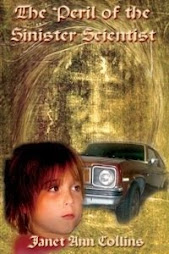Recently I've visited several schools to talk about my books,
Secret Service Saint and
The Peril of the Sinister Scientist and talk to the kids about writing. Because I used to be teacher I find that a fun way to spend a few hours and hope the students learn some helpful information from me.
Because I was a substitute teacher for a few years I can tell a lot about schools in a short time and have been positively impressed with the ones I've visited. It occurred to me that parents might like a few hints about how to judge the quality of a school where they might be considering enrolling their kids. Even though the school year is under way, sometimes children need to change schools because of moving or other reasons.
When entering a school you're considering the first thing to do is listen. If you stand in the hallway you should be able to hear a murmur of children's voices. Excessive shouting, adults yelling and scolding, or total silence may be warning signs that something is wrong. Of course those sounds (or lack thereof) are likely to be heard in any school from time to time, but if you hear them when you enter the building and again when you leave or return for another visit something might be wrong.
Next, use your eyes. Are there interesting posters and student work on display? Are those worn and yellowed with age or do they seem to have been updated recently? Is the building relatively clean?
As you walk along the corridors try to glance into each classroom as you pass by. Are most of the kids focused on what is being taught? Do some of them raise their hands and ask questions? Do most of them seem to care about what is happening?
If it's time for recess or the end of the school day and the kids are leaving the classrooms how do they behave? Do they walk in lines or run and shove? Are they kind and considerate or at least polite to each other?
Things like that can tell you a lot about the quality of the teaching.
I'm pleased to say the schools where I've done author visits have all passed these tests with flying colors and seem to be excellent.












